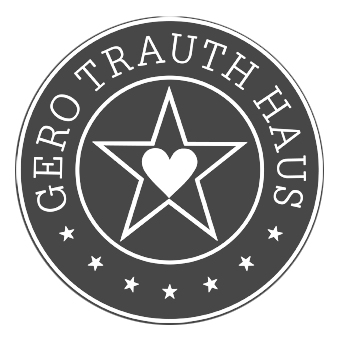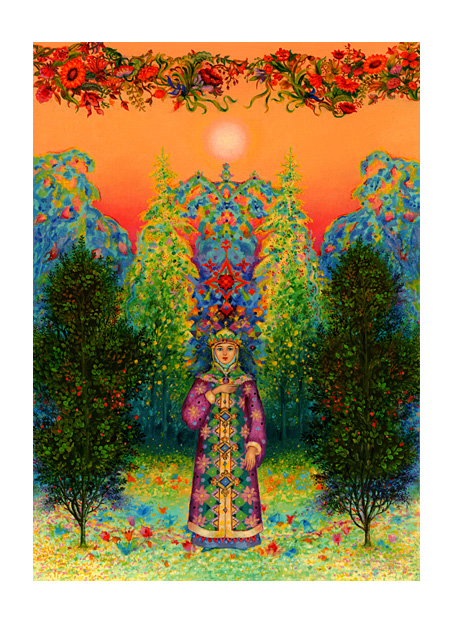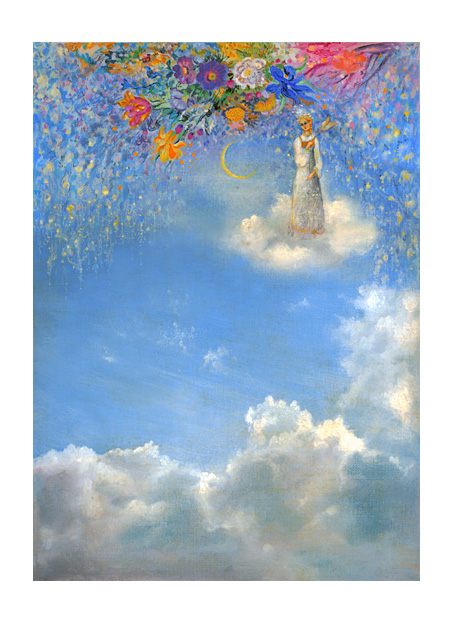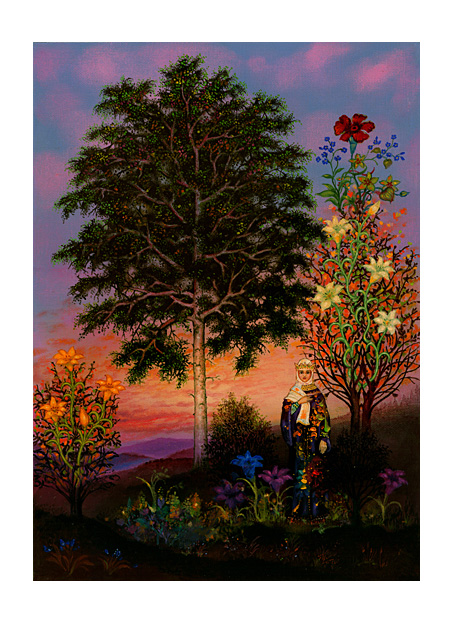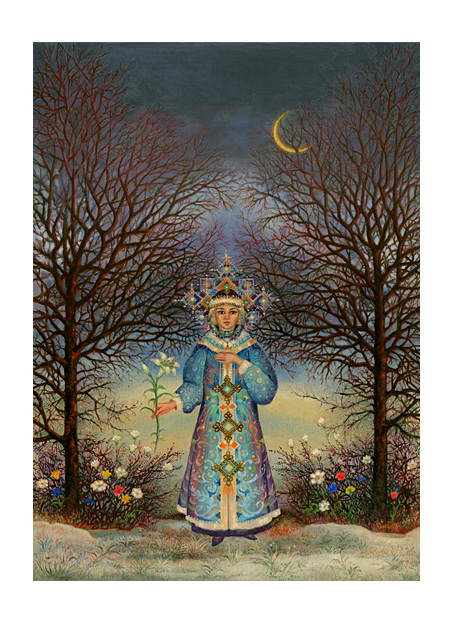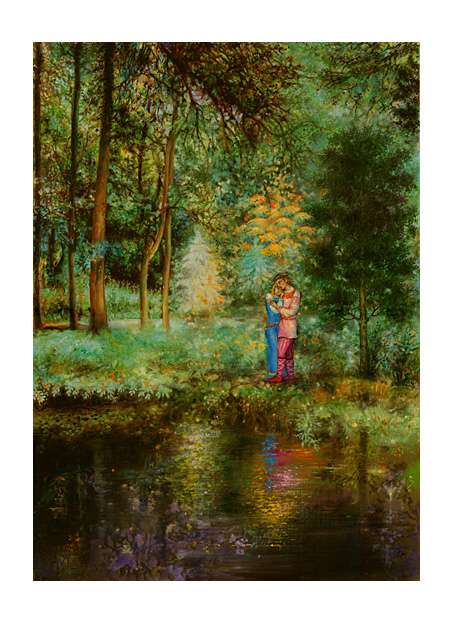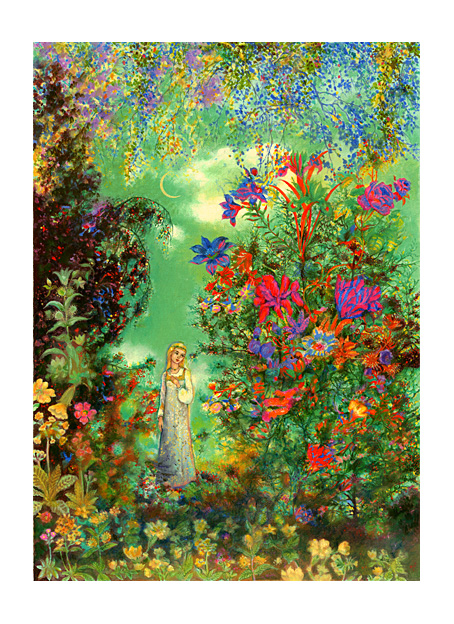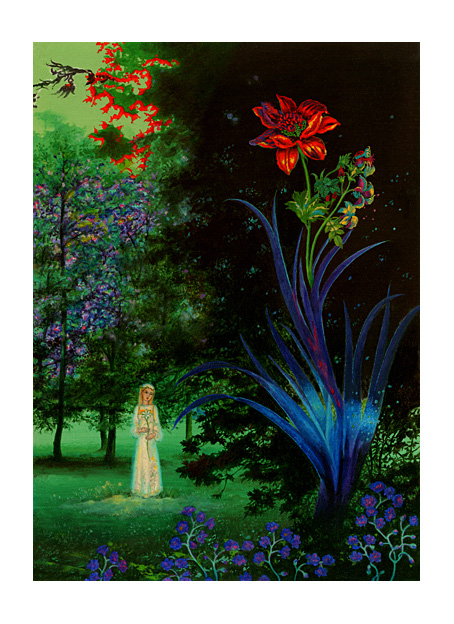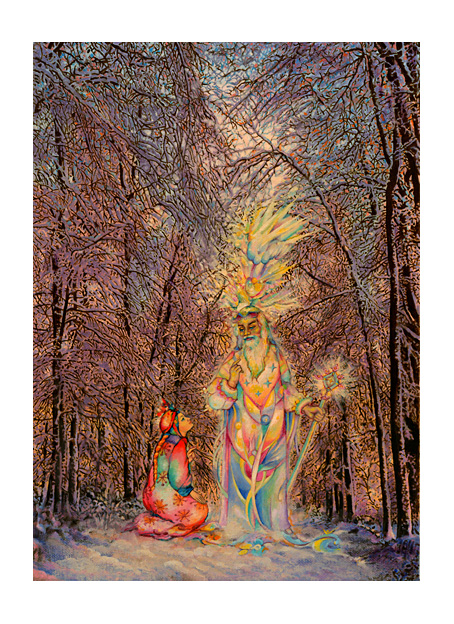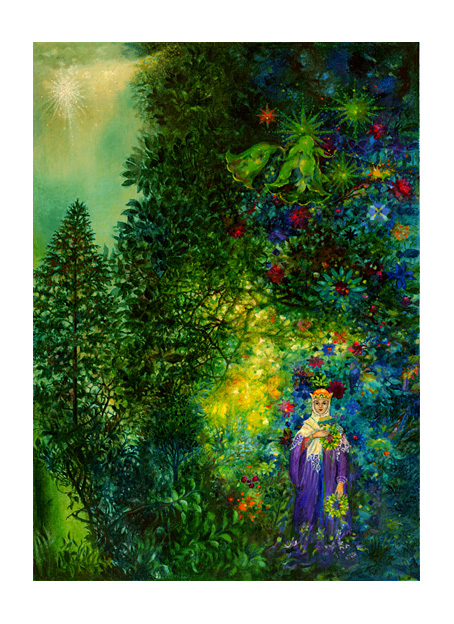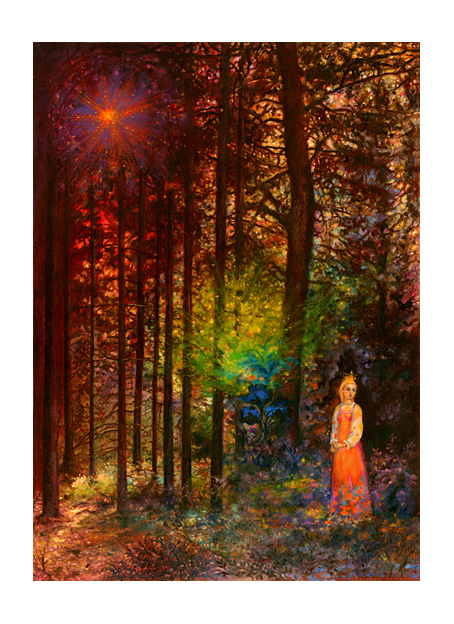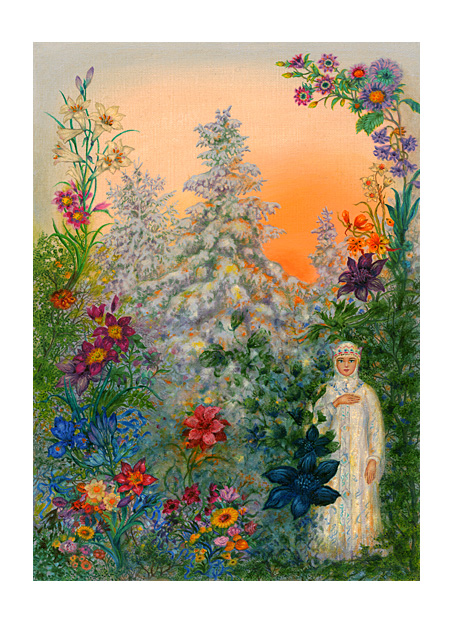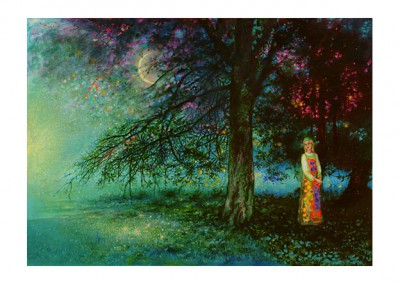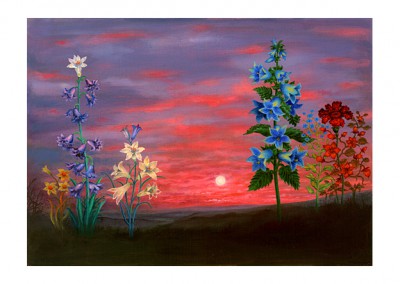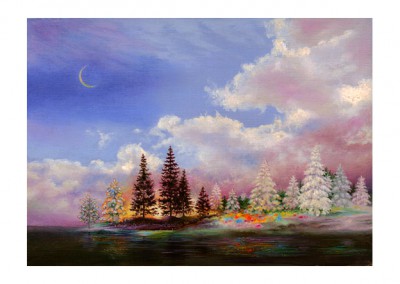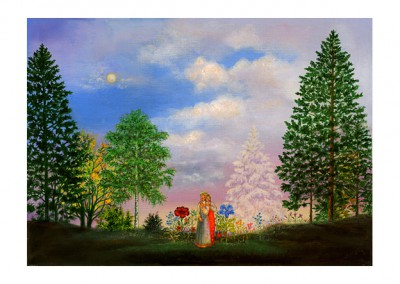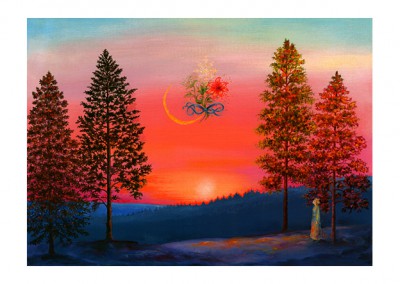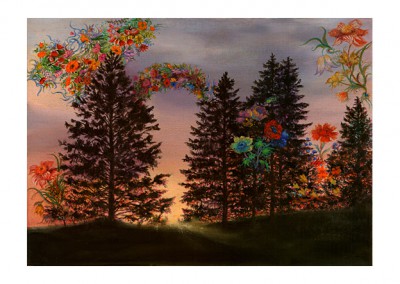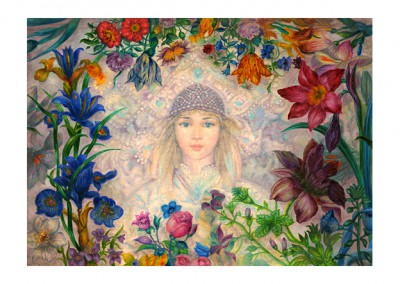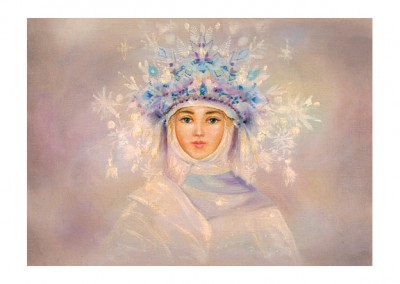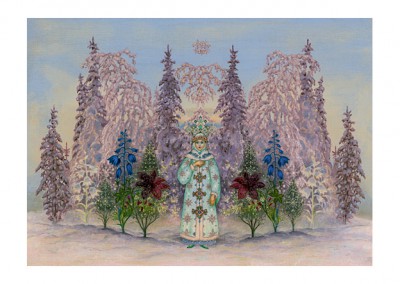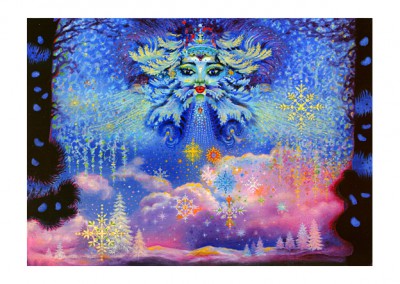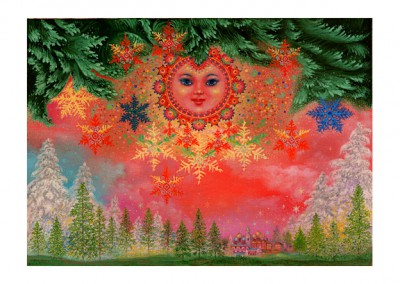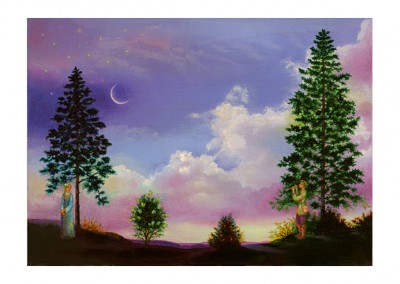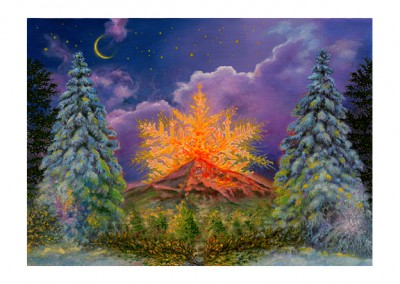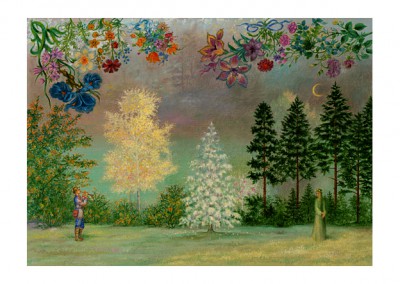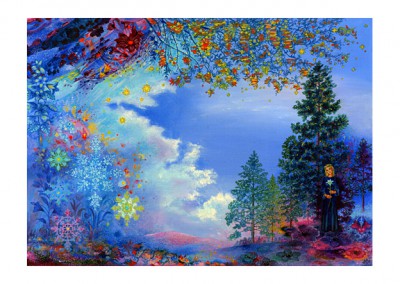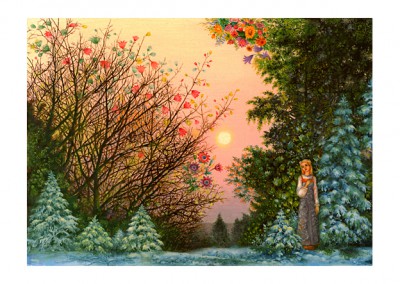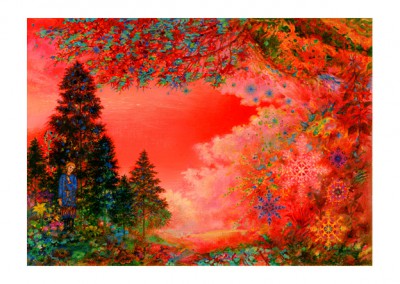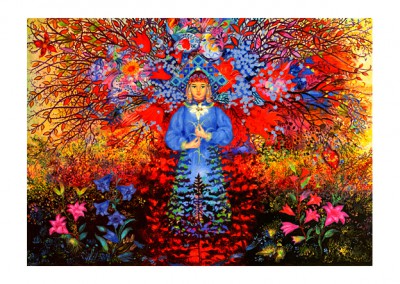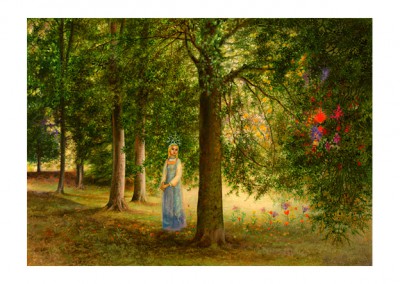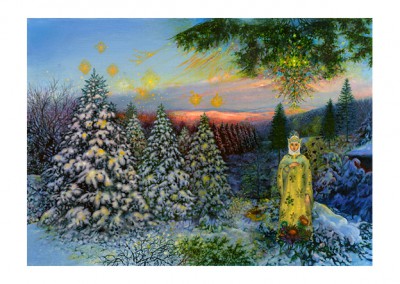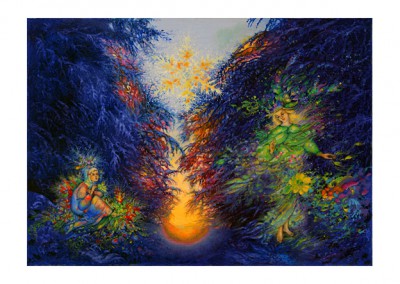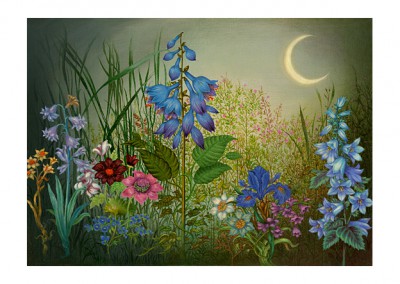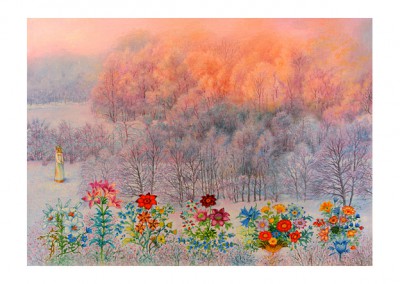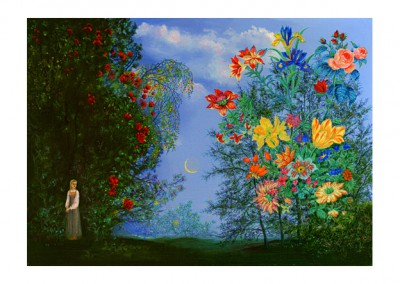Snegurocka – Little Snowflake
Sceneries of the soul from the play
By Alexander Ostrowski
Gero Trauth has created a new series of paintings based on a literary text: Alexander Ostrowski’s “Snegurocka”, a dramatic fairy tale about winter and spring in four acts plus a prelude. Alexander Ostrowski wrote the play in 1872.
The fundamental theme of the play echoes the oldest fairy tales and legends. Snegurocka or The Snow Maiden is doomed to die on being touched by the rays of the rising sun. She is a creature unable to love and yet she wishes she could. She enters the world of human beings and either makes them unhappy, or, in her desire to experience love herself, finally dies.
Gero Trauth has painted himself into this fairy-tale world and has created a series of pictures full of poetry and secrets which mirror the whole spectrum of the Russian mentality. Each oil-painting of the “Snegorocka” has its source in either a monologue or a dialogue from Ostrowski’s fairy tale.
The pictures and the dramatic text complement one another: they whisk the beholder and the reader away into the classic Russian fairy-tale world and likewise into the conflicting maelstrom of a love that must eventually break at the selling of the soul.
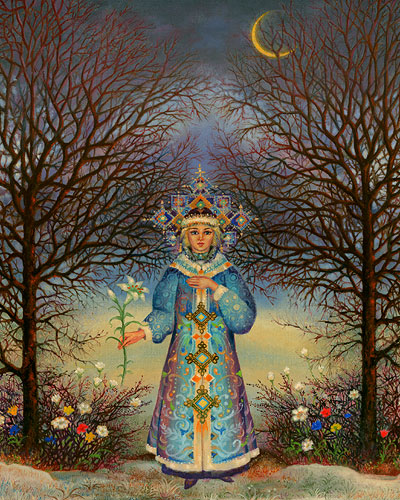
Opening
The opening of the Exhibition took place on 15th November 2008
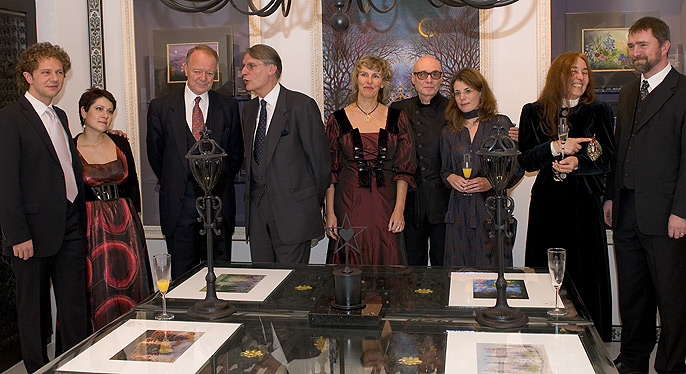
Musicians and speakers (from l –r):
Martin Panteleev, Lida Kantcheva, Dr. Ernst-Jörg von Studnitz, Prof. Dr. Joseph A. Kruse, Dr. Barbara Gobrecht, Gero Trauth, Dr. Ariane Martin, Irina Graf, Prof. Dr. Alexander Graf

Marianne Hambloch
Presenter
All photos by Heiner Morgenthal
Excerpts from some of the speeches:
Prof. Dr. Alexander Graf
Professor of Slavic Literature at the Institute for Slavic Studies at Justus-Liebig University, Giessen

” […] And to be honest, I must say I was momentarily surprised to find that Ostrowski’s Snegurocka was the centre of attention as one usually associates Ostrowski with quite different dramas and comedies. Then it really pleased me – after gaining a first impression from the Invitation card – to see that these paintings also show what Ostrowski wanted to express.
Snegurocka corresponds to an ideal especially intended by Ostrowski namely that the human condition receives equal recognition despite the fact that Snegurocka is primarily a fairy tale. It is amazing for me to experience how wonderful its relationship to its fairy-tale character, this country, to the Russian soul works. My first expectation had actually been that I would be confronted with illustrations of a Russian book of fairy tales. I was the more surprised to hear about its background and context. Therefore I believe that I can also speak on behalf of the other guests when I say it will be a great pleasure to see a lot more of your work. […]”
Dr. Ernst-Jörg von Studnitz
Former German Ambassador in Moscow
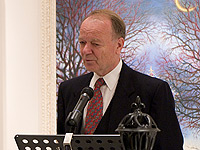
” […] It is difficult to say something about Russia’s fairy tales, its fairy-tale like background and its fine arts. But as soon as I saw just some of your works, I had a notion of the magic that I would like to talk about, as it is only when one tries to approach it from here and thus taps into this world that one begins to understand at least something about Russian art. I am therefore particularly pleased and grateful that you have tried to approach this question in your own personal way i.e. by means of your artistic and expressive skills. This is the very source of strength that feeds the Russians’ feeling of recognition, the unique factor they can’t possibly share with anyone else, as it is what they live by and get their impetus from.
And it is this artistic stimulus that came over Gero Trauth when he attempted to acquaint himself with what is still alive in Russia. We can be exceedingly grateful for the experience with such an encounter with Russia today – through you, Gero Trauth and your works.
Let us hope that many visitors will feel some of the enchantment which speaks to them through you from the subsoil of the Russian soul. […]”
Prof. Dr. Joseph A. Kruse
Director of the Heinrich-Heine Institute and the Heinrich-Heine Museum, Düsseldorf
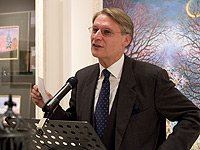
” […]
I want to give you some of my thoughts, as in Gero Trauth we have – I believe – a great artist before us – with the finest brushwork.
He has always tried hard to sketch everything out in detail, to draw as immaculately as possible and the same applies to the “Snowflake” which is like a metaphor to me, in this case for the attempt to achieve what is humanly possible in art i.e. as a synthesis of the arts such as we have the privilege of experiencing today. […]”
Dr. Barbara Gobrecht
Story-telling /Narrative Research, Assistant Lecturer, St Gallen University
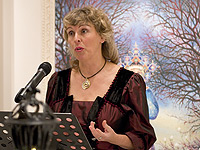
” […] Here is the psychological drama which Ostrowski put into words and you, Mr Trauth,
into wonderful pictures: spring flowers in bright, warm colours surrounding a pale face
with a sombre expression. I find your “Snowflake” very Russian; your “Snowflake” is
beautiful and so fairy-tale tender…for me, very much like you.. […]”
Martin Panteleev
Conductor and Composer, Sofia
Lida Kantcheva
Pianist, Sofia
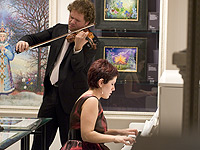
Works presented:
Peter Tschaikovsky: Serenade Mélancholiqué
Edvard Grieg: Romanze
Astor Piazolla: Ave Maria
Johannes Brahms: Sonata for piano and violin
Martin Panteleev:
“Dear Gero, we wish so you many further wonderful dreams. Being here is (also) just like living a dream.”
Snegurocka – Little Snowflake
35 motifs, oil on canvas
All the paintings are also available as signed facsimile prints (limited edition)
Click on the small picture to enlarge
The Book “Snegurocka – Little Snowflake”
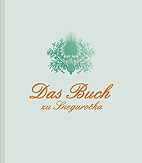
Gero Trauth has created a new series of paintings based on a literary text: Alexander Ostrowski’s “Snegurocka”, a dramatic fairy tale about winter and spring in four acts plus a prelude. Alexander Ostrowski wrote the play in 1872.
The fundamental theme of the play echoes the oldest fairy tales and legends. Snegurocka or The Snow Maiden is doomed to die on being touched by the rays of the rising sun. She is a creature unable to love and yet she wishes she could. She enters the world of human beings and either makes them unhappy, or, in her desire to experience love herself, finally dies.
Gero Trauth has painted himself into this fairy-tale world and has created a series of pictures full of poetry and secrets which mirror the whole spectrum of the Russian mentality. Each oil-painting of the “Snegorocka” has its source in either a monologue or a dialogue from Ostrowski’s fairy tale.
The pictures and the dramatic text complement one another: they whisk the beholder and the reader away into the classic Russian fairy-tale world and likewise into the conflicting maelstrom of a love that must eventually break at the selling of the soul.

